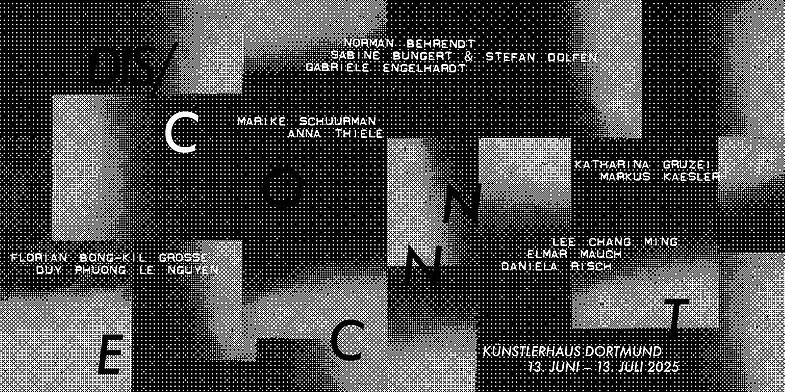
Networks permeate our world – both visible and invisible, organized and chaotic. They connect people, cities, data centers, and natural environments. The exhibition explores dynamic structures and patterns that define networks: the spread of invasive plants, the densification of urban spaces and industrial production, the constant movement of digital information, images and ideas, as well as the expansion of environmentally harmful processes and armed conflicts.
Order and chaos do not appear as opposing forces, but rather as powers that shape, evolve, or destabilize networks. The photographs in this exhibition make these dynamics visible; they reveal patterns, ruptures, and transitions – the fragile balance between structure and chance that defines our interconnected world.


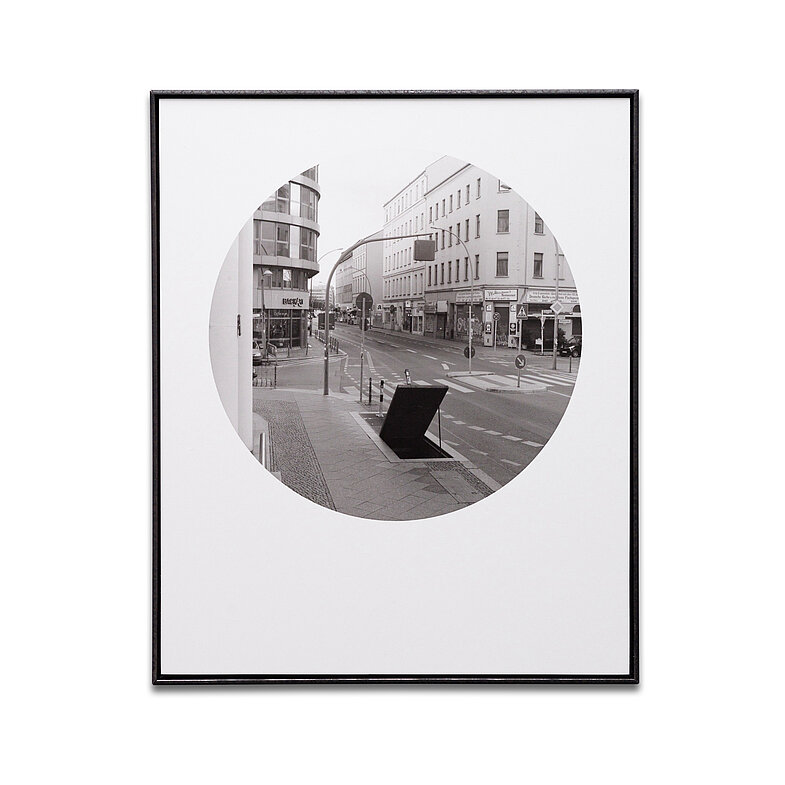
Norman Behrendt's artistic practice revolves around long-term projects rooted in extensive research. His themes are diverse, ranging from the construction of personal and collective identities to the social and political changes sweeping across Europe, as well as the exploration of urban environments.
In his latest project, Exit (2022-24), he uses photography to investigate the hatches of Berlin's subway system and their locations within the city's urban landscape. Typically, these inconspicuous, often hidden exits remain closed and blend seamlessly with the surrounding architecture. However, when open, they form a link between the public space and the unseen, mysterious underground. These open, monitored portals suggest an emergency—an unexpected, uncontrolled event—that disrupts order and security. Behrendt's images capture the essence of this emergency. The lingering questions are: Why are these exits open? Who triggered them? What has occurred? The viewer is left facing an empty stage, suspended between what has happened and what might yet unfold.
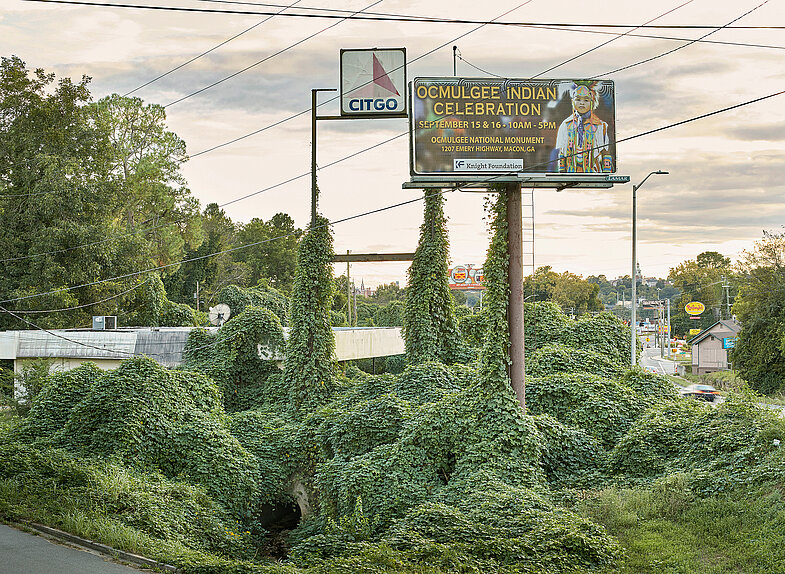
„The vine that ate the south“ ist the common description for the highly invasive plant which grows everywhere in the American South. Originally the plant came from Asia. 1876 Kudzu was imported first time into the USA for the Philadelphia Centennial Exhibition. During the Great Depression farmers were paid to plant Kudzu, to stop soil erosion. Therefore the vine had been widely planted in the South. Today Kudzu is a huge problem. Where it grows it eliminates all other vegetation, Kudzu easily overtakes complete woods. It looks amazing, overgrown trees look like mysterious creatures and the forests seem to be enchanted. But the vine kills the trees, damages property and grows rapidly. Kudzu can grow 30 centimetre a day and becomes 30 metre long. Kudzu has altered the landscape severely and affected the biodiversitiy of the Southern States.
www.bungert-dolfen-photography.de
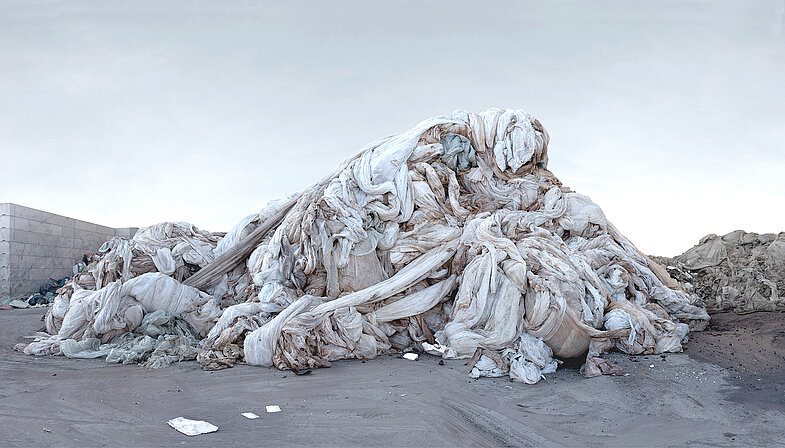
The combination of sculpture and photography is at the heart of the multi-part series raw_material. It shows how bulk materials – industrial raw materials and recycled materials – are transformed into photographic sculptures. These raw materials are stored in large accumulations in ports and recycling areas, and are constantly moved and shaped during delivery and further transport. Engelhardt views this process, which is subject to an economic logic, as a sculptor and photographer with an aesthetic eye. She digitally assembles the large-format images from up to 100 individual shots, so that multiple perspectives of one and the same "mountain" are always combined in one image. This multi-perspective and a sharpness of detail, which would not be possible without the sculptural perspective on the photographic raw material, explains the haunting presence and monumental grandeur with which the individual "mountains" appear in the image.
The photographs were taken in various inland ports in Germany (Kehl and Karlsruhe) and Austria (Krems). They live from international trade and are integrated into a global network. Here you can find industrial scrap, recycled materials, and raw materials from all over the world, including Russia, Poland, Colombia, and China. Many of these diverse materials are stacked in piles and hills that are constantly being altered, re-piled, shaped and layered, widened or narrowed, raised or removed in the process of being delivered, removed, transported, and moved. The seemingly endless movement of things, which is subject to its own economic logic, constantly gives rise to new mound and material formations. These mounds are often enormous, so one would more accurately call them mountains. The piling and storage follows a unique order, for the materials must be meticulously sorted and stored separately from one another. They are subject to a common, universal structure worldwide.gemeinsamen universellen Struktur.
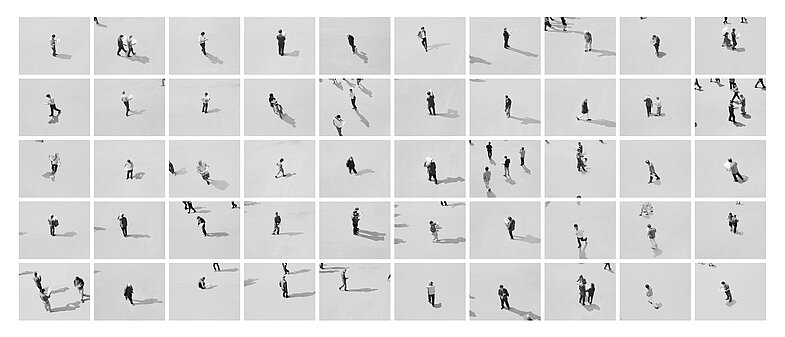
The work comprises a collection of 50 black-and-white photographs. Bringing them together in a grid, they form the overall picture of a tableau. The individual pictures show similar situations of individual people or groups, taken from a distance and from an elevated point of view, so that the neutral floor surface forms the background of the image in front of which the people clearly stand out. Both camera position and image section remain almost unchanged.
A closer look reveals a recurring visual element: the newspaper. The supposed protagonists carry them with them like a necessary accessory that can occasionally also be used as sun protection or a transportation aid. It is a means of communication and at the same time a multifunctional object. The postures of the people depicted appear similarly diverse. They move in different directions from the center of the picture frame, while their shadows trace the contours and create the impression of spatial depth on the homogeneous surface.
Although the pictures describe a banal event, the presentation changes our perception of this situation. The perspective contributes to the fact that the recordings of a direct temporal and spatial assignment remain uncertain and at the same time intensifies the observing moment. The series of images follows standardized recording conditions and gives a clearer view of situations, in which the people are perceived as part of an unspecified experimental arrangement. The pictorial space becomes the stage for a play, making the isolated event part of a supposedly higher-level staging.
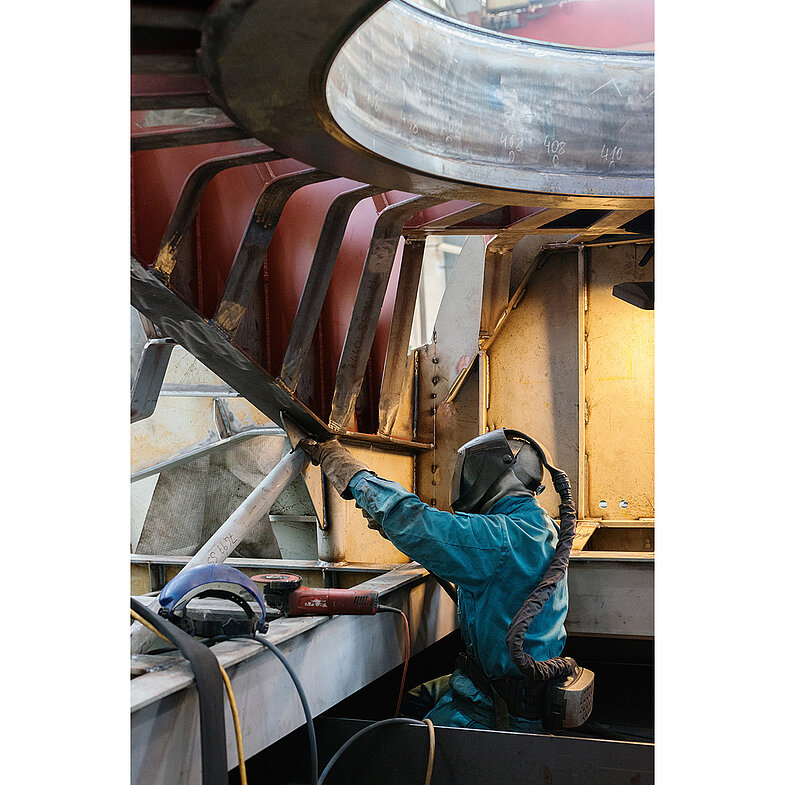
„Work“ is a recurring theme in the art of Katharina Gruzei. Austria's last Danube shipyard provides the starting point for her photo series Bodies of Work. In her pictures, the artist transforms the world of work she encounters into scenarios that seem weightless and reminiscent of science fiction. She depicts how the worker´s bodies and the workpiece merge within the industrial production. The precisely composed photographs meld different temporal entanglements: they engage with the anachronisms of the over 180-year-old company and, at the same time, display a proximity to the aesthetics of space travel. The defamiliarized appearance of the scenery leads away from a specific segment of represented reality to novel aspects of time and space. The photographic findings of the series thus go far beyond a documentary approach.
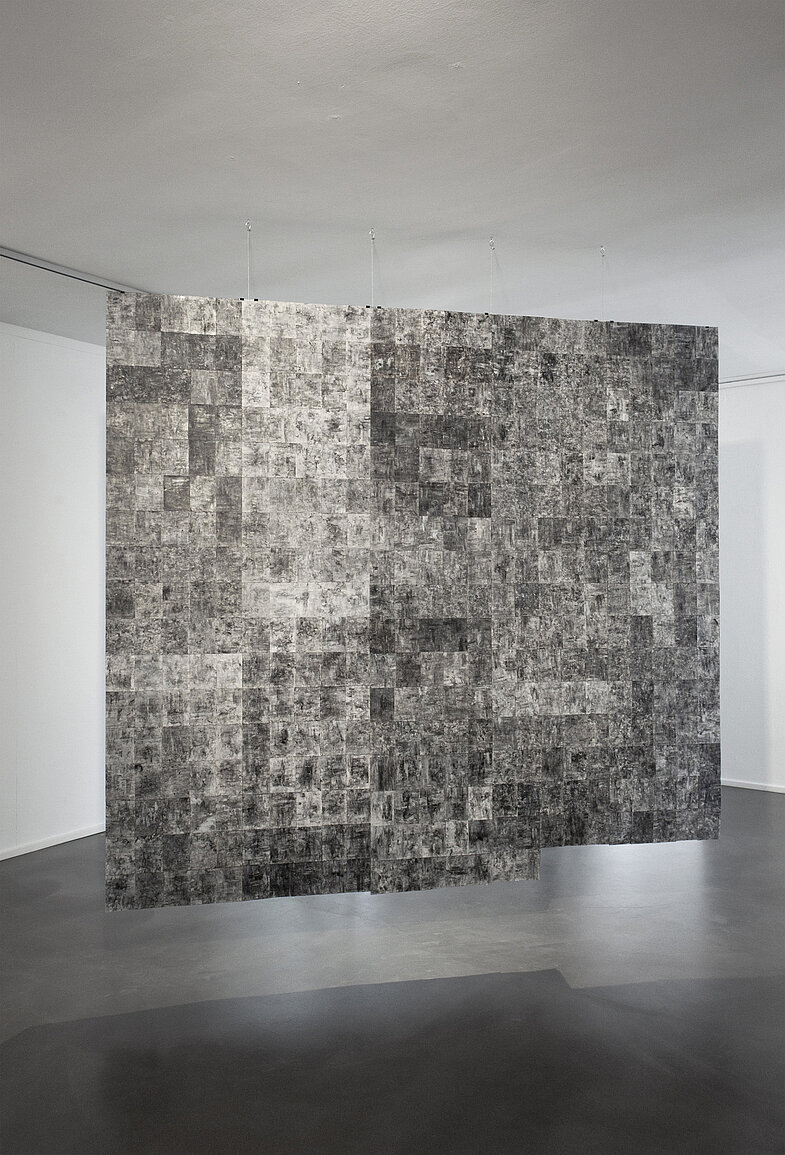
vanitas is an analog, serial (post-)photographic work, triggered by the start of the war of aggression against Ukraine on February 24, 2022. It explores destruction and poses the question: What remains?
Since the beginning of the Russian attack, Markus Kaesler has been "destroying" existing black-and-white silver gelatin baryta prints for each day of the ongoing war by dissolving the image-building silver and rearranging it under mechanical influence. In this way, he transforms photographs into pure material objects, depriving them of their original function as image carriers – analogous to, for example, destroyed infrastructure, which thereby loses its function. The abstract works are reminiscent of paintings, but are created solely by rearranging the image silver. The original photograph is no longer recognizable; only the grayscale distribution remains. The image silver forms new structures, giving the photographic paper a three-dimensional, organic surface.
Each individual sheet is created in a process lasting several days and is intended both as an independent work and as part of the whole. The series grows with each day of the war and ends with its end. The work now comprises over 1,000 individual sheets.
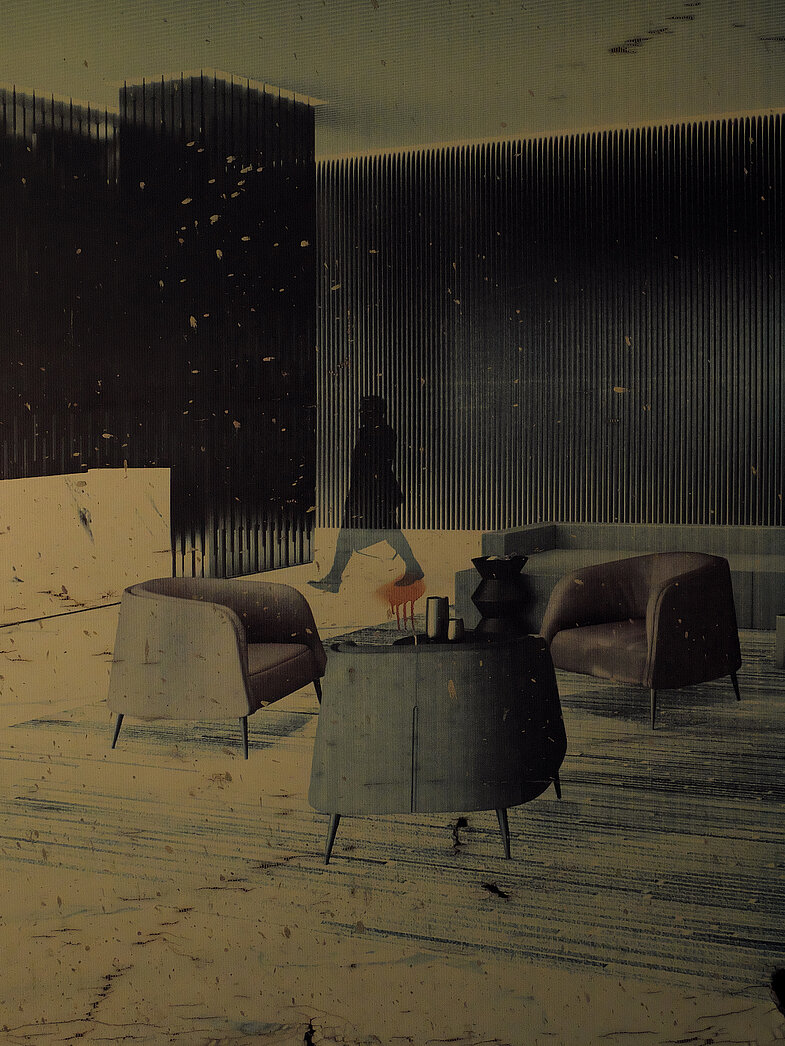
In modern-day Vietnam, where construction is happening at a rapid pace, adverts show images of the luxurious, modern apartments that will eventually emerge from the rubble. They present images of a dreamy, idyllic life, an illusion most people cannot realistically attain.
For many young people living in cities, the lavish lifestyle is a near-obsession – fuelled by an insatiable, consumerist society – and the posters encapsulate their dreams perfectly.
Illuminated at night, the scenes of the new buildings take on a different appearance. Filled with a sense of solitude and loneliness, they become mirages hovering just beyond reach, enticing us deeper into a futile pursuit for perfection.
(Inspired by the works of Todd Hido and Richard Prince, from the series Mirages for which Duy Phuong drove his Minsk motorbike from South to North many times from 2017 to 2020 around Vietnam and captured photos at night. All photos were taken by the natural lighting and the lighting on the street.)
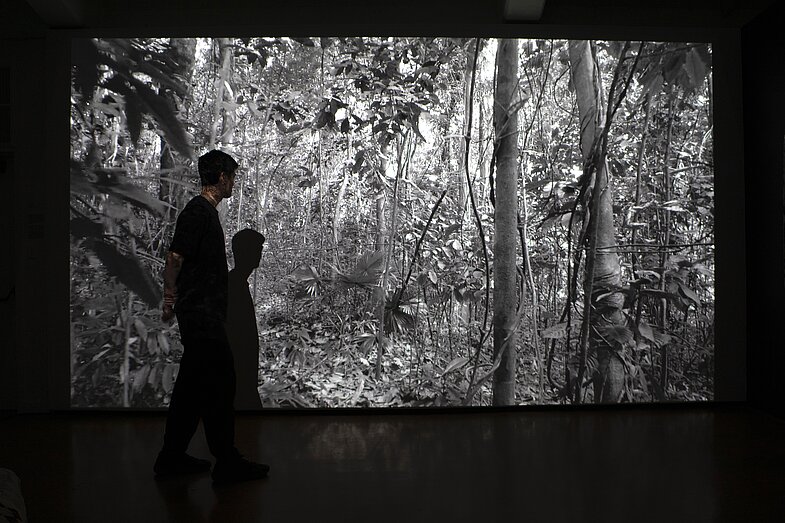
To Turn is centered around the idea of disorientation. Through revisiting a past experience of navigating the tropical jungles of Singapore during army training, the work gets lost in (rather than investigating) the messy affairs of spatial and sexual orientation.
The artist proposes disorientation as a gesture that resists neat binaries and fixed positions by deviating from straight lines and set paths. The secondary forest, as a site charged with colonial history and military forces, becomes an unlikely space for subversion and ecological diversity, full of queer potential.
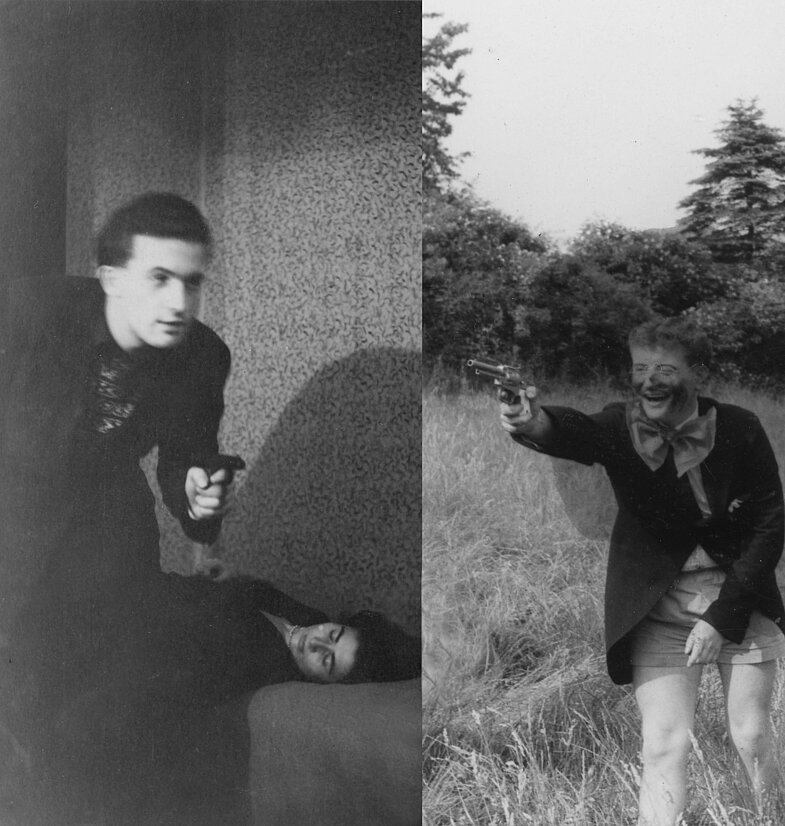
In his new spatial installation Nur die Toten (Only the Dead), the image researcher and artist Elmar Mauch presents striking, delicate, confrontational portraits that enter into an enriching dialogue with the monitor work Kopf ab (Head Off). This opens up a field in which the abysmal stagings of chaos that prevail in some minds when pastimes and subliminal aggression potential strive for visualization.
In all times, it has been mainly men who have turned excessive hormones into bad ideas. The monitor work Kopf ab (Head Off) is an indication of this. In this visual work, which is based on everyday photographs as ist starting point, Mauch uses image confrontations and montages to explore a surprisingly widespread social and visual phenomenon. Over the years, he has crystallized these profound photographic relics from his constantly growing "archive of orphaned images".
They are isolated visual testimonies that, as a whole, have a great deal of potential for disquiet. Mindless aggression, apparent harmlessness and a profound desire to stage something are subliminally inscribed in the photographs. Through the specific nature of Mauch's montage techniques, he confronts and amplifies the source material, thereby making the previously subliminal visible and tangible.
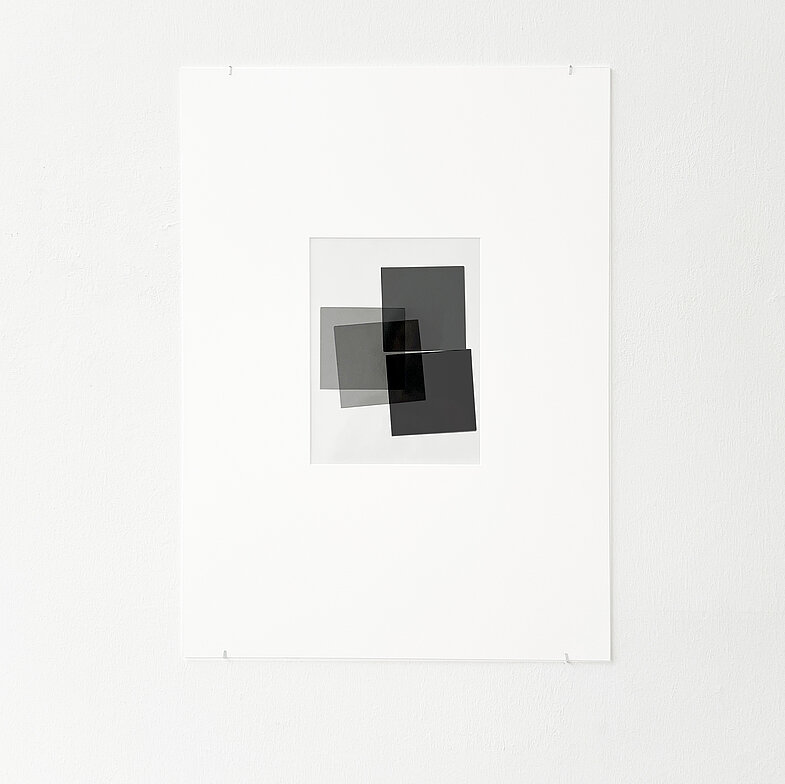
In UNPROPER HANDLINGS, Daniela Risch explores questions related to material, processes and the specificity of the photographic medium. To do so, she deliberately used common techniques and materials against their intended purpose. The results are primarily unique pieces, through which the idea of the infinite reproducibility of photography is rejected.
Photography has always also expressed itself in non-figurative ways. The focus of this work is not the depiction of something, but rather the material itself as the photographic object. These photographs show something, but above all, they show themselves. The idea of capturing the world through photographic images is deliberately undermined.
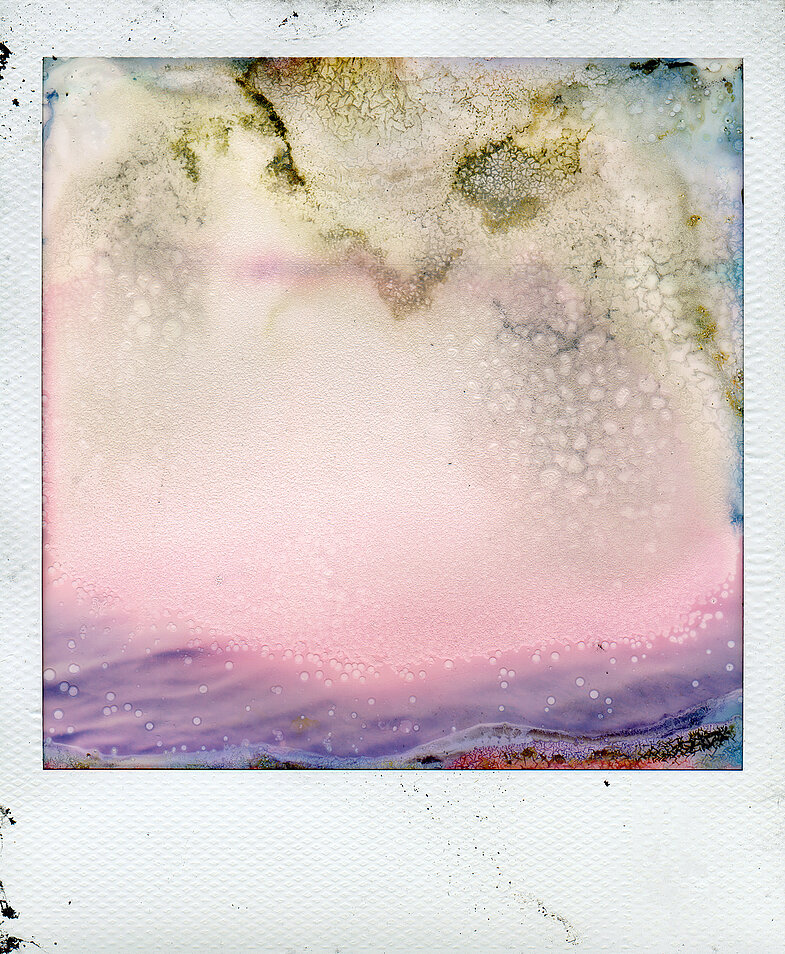
In Toxic (2022 – ongoing) subject and object merge, allowing what is photographed to infiltrate and alter the image. After capturing the boulders used as memorial stones for the excavated or buried villages in Lusatia in her series Kohle (2017), Schuurman continued her research in the region and on the effects of open-pit lignite mining on the landscape. The mining industry left deep craters in the natural environment. Often these abysses are filled with water to create opportunities for future tourism. The water is currently still too acidic to sustain life. Schuurman took polaroids of the surface of these man-made toxic lakes and let the image develop inside the water. The different PH levels of the water, interacting with the acids of the Polaroids themselves, allowed a variety of shapes and colors to emerge: A visual manifestation of the un-naturalness of water. Presented in plexiglass boxes, Schuurman emphasizes the „untouchability“ of her source material.
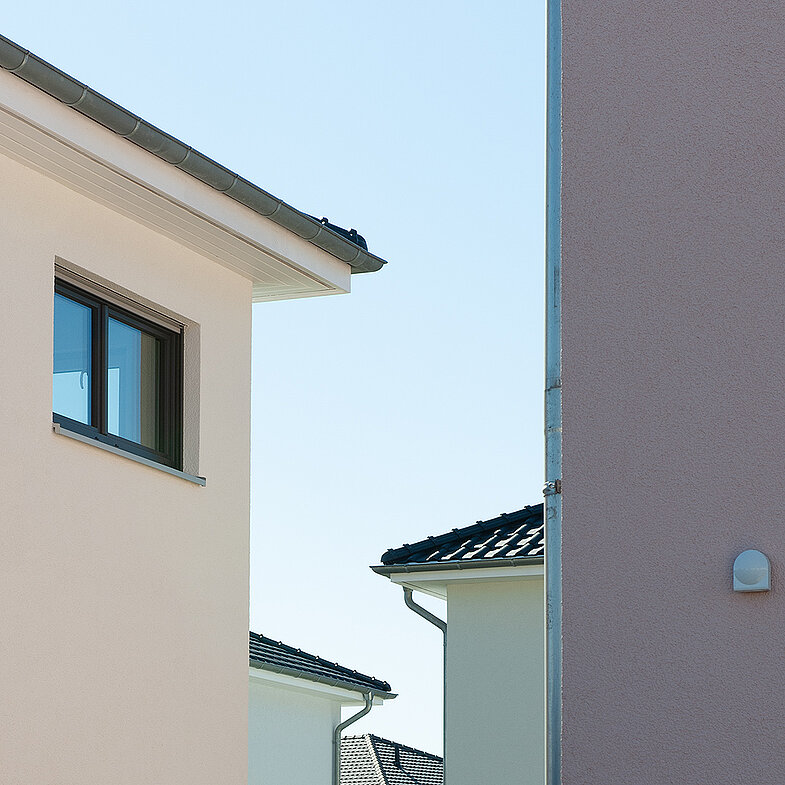
Somewhere on the outskirts of Berlin. The dream of having your own home. Similar architecture can be found all over the country. Individuality picked from the catalogue. Side by side. Ready-made modules create uniformity, and yet everything seems incoherent, just thrown together, in conflict. And where are the people? Their laughter, their voices, or some music playing? Nothing can be heard in the midday sun. Just the dialogue of the buildings. In her photographic art projects, Anna Thiele repeatedly focuses on places of transformation, as she does in this series intimate play, created in 2015.
13 June - 13 July 2025
Preview / Curator's tour
Saturday, 14 June, 6.30 pm
Opening
Saturday, 14 June, 8 pm
Artists:
Norman Behrendt
Sabine Bungert and Stefan Dolfen
Gabriele Engelhardt
Florian Bong-Kil Grosse
Katharina Gruzei
Markus Kaesler
Duy-Phuong Le Nguyen
Lee Chang Ming
Elmar Mauch
Daniela Risch
Marike Schuurman
Anna Thiele
Curator:
Jens Sundheim
Title graphic: Debora Ando
Images works: © the artists
Images opening: © Daniel Sadrowski
Regular opening hours
Th - Su: 4 - 7 pm
Special opening hours
13 June, 11 am - 7 pm
14 June, 11 am - 10 pm
15 June, 11 am - 7 pm
Curator's tour
Sunday, 15 June, 12 pm
Finissage & tour by Steven Natusch
Sunday, 13 July, 6.30 pm
Kindly supported by:
Kulturbüro Dortmund, Werner Richard – Dr. Carl Dörken Stiftung, Bergmann Bier